
Can you design a home purely based on how you want to feel in it everyday?
Clare did, and created a beautiful, sustainable new home for her family.
She shares how she did this, the importance of her mindset, and the essential choices she made along the way.
Listen to the episode now.
Hello! This is Episode 314, and in it, we dive into the second half of my conversation with Clare about building her new, sustainable home, on the Fleurieu Coast in South Australia.
If you haven’t listened to the first part of this conversation, I encourage you to go back and check out Episode 313. You’ll hear Clare share details about shaping her Design Brief, choosing her team, and the sustainable choices she prioritised as she navigated the pre-construction process. You can find all of that, as well as photos of her project, at www.undercoverarchitect.com/313.
In this episode, you’ll hear more about Clare’s project, especially the construction process, and how she got selective about where she chose to hang out online, and what kind of information she generally digested during her project.
LISTEN TO THE EPISODE NOW
Clare also talks about her mindset, sharing a lot of great insights about how she supported herself to be resilient and back her decisions.
She also dives into some detail about some of the choices that have made a big difference to her lifestyle and convenience in her home, and what she would do differently if she had her time over.
And Clare also discusses her key drivers or priorities in her project, including designing a home for how she wanted to feel in it everyday, in the lifestyle she wanted to create with her family.
It’s always amazing to see the variety of industries and expertise in the homeowners that become members of HOME Method.
Clare’s career background as a coach comes through in our conversation on the podcast, especially as we dive into the mindset of navigating a renovation or new build.
If you listened to my conversation with Caroline in Episodes 311 and 312, you’ll have heard her talk about how surprising and unexpected the personal growth component of renovating her home was.
Clare also shares in this episode how her mindset helped her overcome her perfectionist tendencies, and have more compassion for herself and any mistakes she might make.
And what I love about HOME Method members is that, through what they learn and the support they access, any mistakes they make are significantly smaller and less impactful than those who aren’t educated, supported or guided through their project journey!
I hope you enjoy Part 2 of my conversation with Clare – here it is.
This is the transcript of my conversation with Clare about the choices and decisions she made to create her new, sustainable home …
Amelia Lee
What’s obviously jumping out at me is just how knowledgeable you’ve become about all of these things. The level of understanding that you have is so fantastic in terms of understanding how things work, how that works together with the work that you’ve done with your team. I can imagine somebody’s at the beginning of their journey who’s just dipping their toe in the water is going, “Oh my gosh, this just sounds so beyond my league, like, how on earth am I going to gather all of this knowledge together? This just sounds like a lot.” And then it’s that whole thing of we can’t unknow what we know. And so people get resistant too, “Well, I’m just not going to find it out. Because if I don’t know, then it’s not something I have to feel guilty about not doing in terms of how I embark on it.”
So can you talk through that process of becoming knowledgeable, and how you tackled perhaps feeling out of your comfort zone? Knowing what you wanted to achieve… Because you’re obviously at this end of it of three years, and it’s not been all at once that you’ve gained this knowledge?
So can you just talk through that process, because you’re not in the industry. So how has this been for you in terms of what you’ve done and how you’ve approached it and, I suppose, your appetite for it all in terms of how it’s worked for you?
Clare
Yeah, that’s a great question and kind of hard to answer from the inside, right. So I guess, the first thing that I would say is that it’s been longer than three years. I’m sure this is true for a lot of the people that you work with, that this is 5, 10 years of not actively working on a project, but of subscribing to Sanctuary magazine, or being a member of the My Efficient Electric Home Facebook group, which is a fantastic source of advice. It’s going into a Sustainable House Day or watching a video online. And so all of this stuff permeates a little bit. It’s not that I’m studying this thing, but it just gets you thinking and asking questions. And then, I guess getting into it. The amount of information is overwhelming.
And often I would feel a level of guilt, like I haven’t been through all of the modules in the HOME Method. I haven’t listened to every single podcast and feeling like there might be some crucial information in one of them that I’ve missed, and what am I going to do. But a lot of it is, like, and I guess I had to learn this and remind myself of it, is a bit of self compassion through the process as well, that you’re not an expert.
I’ve seen a therapist for some other things, and I remember embarking on a change. And she said to me, “You’re going to eff this up.” She was just like, “Get over it.” And so going into the building as, like, there are going to be mistakes that I made, there are going to be things that I don’t get right, there are going to be decisions that I regret. And just letting yourself off the hook a little bit. And then, I guess, the goal is to make those things around the things that perhaps are secondary, to really focus on getting the most important things right.
So I think the path to learning is just surrounding yourself in the kind of environment and with the kind of people that you feel aligned with. And so that meant a deliberate decision not to be in some home building Facebook groups, or not to look at some magazines or websites, but rather to say, “No, these are the ones that reflect my values. This is where I’m going to hang out.”
And it’s also about figuring out who are trusted people. Like you’re a trusted person to me, someone like Jenny Edwards. I’m just going to learn, I’m not going to pretend that I’m going to know as much as she does. So why don’t I just do what she recommends, and you learn from these people that you trust and admire and are doing the kind of work that aligns with you aesthetically, but also in terms of their values. So I think you’re just surrounding yourself with that, being open to learning.
But the point that you made about knowing when to shut off the information is also really important. I remember the day that my frames went up, I was in a spiral, like, “What have I done? This is ridiculous.” There was a true high, then this, “Oh my gosh, I’ve made a massive mistake.” And there were a few points during the construction that I was like, “What have we done.”
Timber wall frames erected on the concrete slab [SOURCE]
And I could have very easily gone down a rabbit hole of researching again, but that was not going to be useful. So I think there’s a part in the process where you’re flaring, you’re getting information and that’s about you wanting to get the decision right and you making the right decision there. But then at the point of bringing it together where you have to focus and make a decision, and for me that’s about making the decision that you have made the right one and just backing yourself.
During the construction, I remember driving to pick up my kids from school and I would just chant a mantra to myself, like, “I back myself to make good decisions. And I trust that I can always figure out a way forward.” And just reminding myself that there was unlikely to be any problem that was so insurmountable that I and my team couldn’t figure out and I just had to keep backing myself through that process.
Amelia Lee
Thank you for sharing that with us. I want to dive more into your mindset, generally, because I think it’s going to be super helpful for others to hear that. Because I feel like it is the elephant in the room that doesn’t really get to start discussed explicitly about your projects.
But I just wanted to touch on the thing about making the mistakes, and the fact that you were going to make mistakes. Because I think that what’s underestimated in the process of getting educated for your project. And you talk to the work that you did to expose yourself to the right kinds of pieces of content and the right environments, and of course, jumping into HOME Method and being in that community where you are surrounded by like-minded people, and you’ve got that step by step structure.
And I think, then, what I see happen is yes, there’s always going to be challenges because you’re doing a custom project, and it’s the first time this house has ever been built anywhere on your block of land. But the gravity of the mistakes are nowhere near what they could have been had you gone in without the information, or you don’t actually find out how bad the mistake is until you’re having to live with the consequences of it in your finished home, and then you realise that you just did not even see that one coming and now it’s compromising your everyday life or it’s creating dramas in the way that you live.
So I love that you had your core foundations, to borrow a building term, so well in place. You’ve done the work. And then yes, building up that self trust, building up that ability, that resilience, that strategic solutions focused thinking, which has all come because you spent that time and that effort and energy in being in the right environments to do the work.
And I find it really interesting, because I think a lot of people, they want this to be easy. And they don’t understand that when something is simple, it’s easy. But that doesn’t necessarily mean that it’s not going to have a level of complexity and challenge to it. And so when you have clarity about where you’re going, what you’re seeking to achieve, you’ve surrounded yourself with that right environment, and you back yourself in, you’ve built that self trust and that resilience, then the journey that you’re following for the next few years becomes a lot simpler. And so I think, the way that you spoke to that experience is really powerful.
And I’d love to dive more into your mindset because I know with your career, you will have a level of self awareness about this and sending it in other people. And it’s something we do talk about in Undercover Architect, inside HOME Method, is that some people get blindsided by it, some people are just blown away that it’s playing out in the way that it is in their renovation that it does in other parts of their lives.
How did you find navigating your mindset, managing your stress, all of the stuff that can get drawn up in the fact that this is your home, you’re creating this for your family, and you’re making big investments, what did you do to navigate that emotional journey and keep your mindset in check through all of that?
Clare
I’m not sure that I did particularly well. To be honest, there were a lot of tears, a lot of self doubt, a lot of angsty phone calls to friends along the way. But I guess I learned a lot from it. And I think, like I said earlier, I think it’s about really coming back to what’s important, and then just having some faith. A lot of building, you try to control a lot, you try to get informed, you try to document things, but there’s always going to be this element of, “I need to trust that I’ve done the work, I need to trust that I built a good team.”
But there’s always going to be some things that are out of your control. And then it comes to about, “Well, I trust myself that I can navigate these. I trust that I’ve got a good team to do that.” So yeah, a little bit of self compassion. I wish that I had probably shared more about what I was doing, either with the HOME Method members or with other professionals. I think that sometimes I’ve been a bit of a perfectionist, I had a fear of the critique or the fear of knowing that I was doing it wrong.
And so, sometimes, that led me to just isolate and try and figure out things myself. So having some more support around me and being more willing to ask for support would have been good. But making sure that I always was clear on who is providing it, these people are advisors to me, I’m still the decision maker here. I’m not doing what everyone else wants. But I think that that probably would have been helpful along the way.
Amelia Lee
Yeah, that’s a good observation. I think we can find it tricky to ask for help, because we’re worried we’re going to look foolish or ask a silly question. And yet, you don’t know what you don’t know, and you’re not supposed to know everything.
And I love your frankness about being that perfectionist. And we all worry about being judged. We all worry about what it might show up. And when your identity is attached to being somebody who is a great learner, who loves learning, who can absorb a lot of information, who does the work to be confident in certain positions, and those kinds of things, then to ask questions that might challenge that sense of identity that you have about yourself can always be a little bit tricky.
All right, so you had that pivot in construction, was there anything else that, in terms of the construction process, that was unexpected? You mentioned getting a little bit nervous when you saw the framing go up and that kind of stuff… How long did the construction phase end up going for? Can you remind me?
Clare
We ended up breaking ground, I think, November, December of 2022. And we did handover in September 2023.
Handover gift from the construction team [SOURCE]
Amelia Lee
Okay, awesome. So just about 10 months, give or take a bit of time out for Christmas? So it’s like birthing a baby, isn’t it? And so the whole construction process, which is obviously a big chunk of time, how did you find it? Well, obviously, you were visiting site regularly, having site meetings, how did you feel as a single woman navigating that, and working with your team, in that environment?
Clare
Yeah, so I’m really lucky too. I was living just down the road, so it was really easy to pop past the site and checking it and things and how it was going. The thing that I really liked about working with Sam from 35 South, and one of the big advantages with working through a builder through the design phase, is you get to learn about how they communicate, and if they can communicate. And I’m a big emailer, and Sam was fine with that. And so we do a lot of correspondence through email, we’d meet on site, and so he was really receptive to that kind of communication.
So I think being able to test that and establish both ways how communication would work early, that was really good. It was just a joy to be able to see it go up and to actually have a relationship with the guys that were building it. And I think that it does matter to wander down to site with a bag of iced tea pops on a hot afternoon, it does matter, and to be able to say to these people, “This might just be a job you’re building, this is my home, and I’m so grateful for the the effort you’re putting in.” And so to be able to celebrate with the guys on site when we did the air tightness test, I think it was really nice to have these moments of connection with the team.
The advantage of doing quite a bit through email is that you have this written log, rather than just the phone calls. And I know that that’s something that you talk about a lot, is making sure that you have that evidence because there are a lot of decisions that you make. And I think that in hindsight, again, maybe we needed to get clear about documenting those in a single place.
Because, again, I did a cost plus contract. So that meant that there was a little bit more scope for variation along the way. So just really making sure that we had those really clearly documented. But again, I think it really goes to a lot about the relationship that you have, and then the values that you have. Your builder has so much influence over how this project turns out. And so I really wanted that relationship to be really positive and respectful. I’m really grateful that we were able to achieve that.
Amelia Lee
Yeah, and that tip about creating the paper trail, thank you for sharing that because it is super important. You won’t remember all the decisions that you’ve made either. So for you to be able to go back and look through that documentation becomes very important.
How did you go about selecting all of your materials and your products because, obviously, they would have had a very strong relationship with your sustainability goals? What did you do to upskill yourself there and to work with your team? Was there any point of contention in the things that you wanted to use versus what the builder might have felt was low risk to use and those kinds of choices as well?
Clare
I think we were pretty aligned throughout. There were some things that I definitely wanted to use. Using recycled brick was important to me, and that was largely an aesthetic decision rather than a sustainability one. I really liked the look of recycled brick. The area in which I’ve built has a incumbrance, which requires a 40% masonry construction, so meant that we were going to have to have some brick in the build.
A pallet of recycled red bricks [SOURCE]
But then we played around with some different lightweight cladding options. I was quite keen on using Weathertex, I, again, liked it aesthetically, it worked well in terms of the construction and the values that I had as well.
And we ended up using James Hardie Fine Texture cladding for a portion as well. And that was, I think it might have been Lachie’s suggestion too to bring in that material. So again, I think if everyone’s clear and aligned on the vision, then it’s easier for them to make recommendations that align. Again, I was quite keen to use polished concrete floors, to better the thermal mass, but also aesthetically. And practically, I heard you talking about it recently I think on a short video, I love I don’t have to clean it often.
Combination of Weathertex Woodsman 150mm and James Hardie Fine Texture cladding [SOURCE]
Amelia Lee
It hides all manner of sins doesn’t it?!
Clare
So good. So. So I think that, again, coming into the conversation with pretty clear ideas about the things that matter. And then in terms of other selections, like my bathroom and laundry tap ware, that was really low down the list of priorities, other than having highly water efficient showerheads. Everything else was pretty low down the list. And so it was just, I walked into Tradelink and sat down and said, “That one, that one, that one, that one.” And it was really about simplicity and budget there. So again, it’s knowing about where do you want to invest? And what are the other things that you can let go?
Amelia Lee
It’s interesting that you make those choices of those interior fixtures and finishes, which is where most people’s attention is focused, because they’re like, “Those are the things that I can handle and touch and understand. I can get a tile sample and that kind of stuff.” Whereas understanding what brickwork might look like across a wall that’s six metres wide can be tricky for some people to wrap their heads around.
And I think too, also because you can see the price of a tap and you can see the price of a toilet, and so you can have a sense that you might be navigating your budget in terms of making these decisions. And they’re the things that you’re going to have around you, so they’re going to have an aesthetic stamp. You make it sound quite casual, in the way that you chose them. But seeing some of the interior photographs of your home that you’ve shared, you’ve created a stunning environment internally that works incredibly well, holistically together. And I think what really comes through is just the home has this lovely light-filled, light feeling to it, and ease and comfort to it. And then, the connection with outside and there’s an integrity about the materials.
There’s a naturalness about the materials and the colours that you’ve worked with. So it’s really interesting, again, because I think that even though you explain them like they’re quite casual choices, they were obviously so driven by your core foundations of what you wanted to achieve, that it made it much easier for you to choose them quickly, and choose them from those kinds of avenues.
Dark mossy green cabinets and black benchtop [SOURCE]
Clare
Yeah, that’s a really interesting point that I probably hadn’t thought about. And maybe that is, with that decision making, was a little bit about the relative priority that I saw there. But also about just absorbing the aesthetic that I like, and that’s years and years of knowing that I like that kind of look. And so maybe it was less of a conscious decision to say, “Right, this is the type of style I want.” But just that sense of knowing, “Oh yeah, that’s the style that I like. That’s the style that I like.” Sometimes it’s quite surreal. I was out just watering the garden before I got on the call with you, and looked back at the house, and I thought, it’s crazy sometimes that a thing that exists in a vision or on a piece of paper, that it now exists in 3 dimensions and it’s actually real. And that still blows my mind sometimes. But it’s really a lovely house to live in, it does have a nice feel, and it does have a nice light.
Amelia Lee
Yeah, it’s beautiful Clare, to see how it’s just all come together. I wonder if you can just spend a little bit of time telling us what it’s like to live in as your finished home, like how it’s working for you, and if it’s living up to your expectations, now that you’ve been in it a few months. Before we jumped on, you said you actually had to dig from the depths of your memory about what it was like to navigate this project. I do feel like building and rebuilding is a lot like childbirth where you forget, and you’re just handed this baby or this finished home.
What’s it like living in the physical demonstration of what you have been able to achieve with the intention, effort, time, money that you have invested, and the way you’ve corralled this whole process together? What’s it like for you?
Clare
There’s no formula for achieving that, there’s a range of factors that go into having that. And it just works really well for my family. I really love how we’re able to gather around the kitchen bench, that connection with that doors, the flow there. It’s really nice that the kids have their own space, but I’m never too far away. It feels right sized for us.
Mural in the front entry way [SOURCE]
The mural in the front hallway is one of my favourite things. So I got my friend, Genevieve Byrt from Gen and Tonic, she’s the mural artist and she did this wonderful mural in the entryway, which totally transforms that space. And then I let the kids choose the colour for the door of their bedrooms and their blinds. And so having these little pops of colour around the house just makes it feel really joyful and fun to be in. I really love that at the end of my hallway, I’ve got windows at the end of the hallway. And both have views of trees. And so just catching those glimpses when you see things working.
And on a really practical level, one of the things I thought about sharing was how important it is to think about not only how you want the space to look, but what you want to be doing in the space. And one of the things that was in my mind is that I want it to be easy for the kids to go outside and go to the beach. And so that really means that okay, so which door are they going to go through? Where are we going to wash our feet? Where we’re going to hang our towels? And the one that I think about a lot is where we’re going to store the suncream, and I’ve got a really great spot for storing the suncream. And it’s a daily thing, putting on your suncream. But making it easy and built into the way your house functions, I think that getting really granular like that – and that’s not about, “I want this dimension of here and what this height,” it’s about actually going through in your mind, “Okay, when we get up at seven, and we move here and move here,” and really just imagine yourself existing in this space means that you’re going to create a space that works for you.
Amelia Lee
Yeah, that’s amazing. And if you take yourself right back to the design, is that something that you formulated before you started the design process? Or was it as the design was coming out, you’re like, “Oh, actually, we need X, Y and Z”?
Clare
No, that was so clear throughout. And the whole, “Where are we going to put our devices?” Because I want somewhere that devices can be charged but they’re not super present. So thinking about the things that are almost like the points of friction in my existing life, and it’s like, I want to design a house that makes all of those just really easy.
And I think, for parents of kids, there’s just stuff and there’s notices and school bags, and just really thinking through about, “Well, how is this going to work in my house?” And sometimes it can be easy to think, “Oh, well I’m going to build this beautiful house,” but it’s for some imaginary family. I’m not going to clean my floors that often, so actually think about what does this family need? What is realistically the amount of cleaning and maintenance I’m going to do? What is the realistic use of space? Yeah, it’s really important. But it is a lovely house to live in. It feels really comfortable, both in terms of temperature and the air quality, and in terms of the function as well.
Amelia Lee
Oh, it’s music to my ears Clare. Literally, you became a Design Detective before you dived in, and you literally have interrogated and diarized what your life needed to be to work really well. And it is that thing, we have those conversations about how do you set the house up to support the habits that you want in your future lifestyle?
I got this question just recently from somebody who was asking about is a really lovely kitchen actually going to help them be able to cook more in a more healthy way, and be able to feel like they want to cook more regularly? And I said to them, “Well, if you’re not somebody who’s passionate about cooking and eating healthy food, then the amazing kitchen is not going to all of a sudden convert you into somebody who can cook.” But you can’t underestimate what happens when you design a home well, so your brain isn’t occupied by all of the clutter of getting life done in an inconvenient way.
When you actually have a house that supports you living in a streamlined, convenient, functional way, it’s amazing how much then your brain is freed up to then have bandwidth for other things, which is like, “Oh, actually, maybe I can spend some time thinking about how we’re going to nurture ourselves nutritionally.” And I can step out into the garden and think about growing veggies, because I’ve got this house that draws me to outside, and I want to be out there.
Have you seen that, in terms of the domino effect in your life and your work? We talk about your homes being the launchpad for your lifestyle. Have you seen that play out for yourself compared to where you’ve lived in the past?
Clare
Yeah, I think that certainly thinking about the function, making it really easy to pop a load of wash in, or not having things in the depths of the house, making it really easy to move between different zones. The kitchen works quite well, I really love how it functions. And I’m not a huge cook, and so I didn’t do the multi oven, butler’s pantry extravaganza. But I wanted to have a house that, in terms of the kitchen, I guess the priority there was being able to cook and interact with my family at the same time. So making that the design priority in the kitchen. Yeah, but certainly for the kids, what I really like is that it’s an easy house for them to feel safe in being outdoors and indoors. And for them to just be able to navigate and use themselves. So it’s working really well.
Rear extension of the house [SOURCE]
Amelia Lee
Before we wrap up, is there anything else that you would like to add that you think people need to hear about making their project a reality, based on your experience?
Clare
I guess the one I can think about, what would I do differently if I had my time again? And probably the one thing that comes to mind is around engaging an energy efficiency assessor earlier in the process. So I think it worked really well with having the designer and the builder early on. But I would have brought in an energy efficiency assessor. By the time we got to that point, and I think you’ve talked about a lot, at the end of the approvals, you just want to get started, you just want to sign a contract. And you feel a bit like as a client, I don’t want to hold things up. And you’re just, “Let’s get moving. Let’s get into it.”
So I mean, while we achieved an excellent result there, I’m noticing being in the house, that there are probably a few windows where I’m like, “Ah, I might have changed either like tinted them, or I might have changed the sill height slightly.” And just working with an energy efficiency assessor maybe to do a little bit of back and forth… I think one of the things I’ve learned is that some energy efficiency, assessors are more transactional – less of a consultant. And so finding an energy efficiency assessor who was willing to actually provide suggestions.
Because, I think, my instinct is that there were some really small tweaks that we might have made that would have just changed the thermal performance and the comfort of the home slightly. So that would be my advice, is find a good energy efficiency assessor and pull them in early.
Amelia Lee
Fantastic. Yeah, we’ve got those fantastic sessions in HOME Method that we did with Sid Thoo, where he shows how you can use so much of that data during the design phase to actually help you make data driven decisions so you’re not guesstimating whether windows are going to need to be double glazed or you need a particular level of insulation.
What star rating did you end up getting on the house? Can you remember?
Clare
7.8.
Amelia Lee
Yeah, so fantastic. At the time you were going through, the benchmark was six stars. Now we’re requiring seven stars, but you’re already future proofing beyond that. I can imagine your bar’s very high though.
Clare
Yeah. And definitely, the house is so comfortable. And I do have a split system air conditioning now, which is helpful. But I think that I’m just noticing, especially with the summer, I’m like, “Alright, we’re getting a bit more heat gain.” But the advantage now that I have is, being in the house and seeing where the light falls, is that I’m able to plan my landscaping a little bit differently.
And so now I’m thinking around, what might we plant here? And having that time and space to be in the house, I think a lot of those issues that I have around all the heat gain that I’m getting at the moment, will be easily mitigated by some clever planting around the house.
Amelia Lee
Yeah, most definitely. That deciduous shade and those kinds of things will be super helpful. And that also will feed into your desire to have that strong connection with outside and to feel drawn to outside, as well, to be able to have that kind of environment around your home as well.
Clare
Absolutely.
Amelia Lee
Clare, I can’t thank you enough for how generous you’ve been in sharing your journey with us. It has been so lovely to watch how you have created this haven for yourself and your family. It’s been so clear how intentionally you have made this happen for yourself and the way that you have upskilled yourself, I think you totally undersell your role and what you’ve been able to do in terms of how you’ve been able to make this home a reality.
And so, I think it’s a total testament to what you’ve been able to do for yourself and your family. And it’s exciting for me, because I know that you’ve applied to be in a Sustainable House Open Day as well. So you’ve also got an attitude that you want to share this with others, you want to help others actually see how this is possible, because your value set is based on a much bigger view of how you would love the world to be.
And I love that HOME Method attracts homeowners like you because we’re all seeing our home as being a reflection of the kind of world that we want to create. So thank you so much for being here. Just super grateful to be able to spend this time with you.
Clare
Thank you so much. And thank you so much for all the work that you do. I think that the HOME Method and the podcast has been super useful for me, not just in terms of the practical resources and tools and advice there, but just feeling like you have other people walking this journey with you and yeah, for the support and having a bit of a cheerleader along the way. It’s been really great. Thank you.
Amelia Lee
It’s my pleasure. I’ve loved cheering you on. So thanks so much.
[END OF TRANSCRIPT]
There’s so many gems in this episode for you to learn from as you navigate your new build or renovation journey.
That sunscreen conversation? That’s such a great representation of the detail to think about as you rehearse your daily activities to ensure your design sets you up for convenience and enjoyment in your everyday life long-term.
My takeaways from the conversation with Clare? Well, there are SO many, but let me summarise with my top 5:
#1 Clare’s intentionality around sustainability in her future home clarified so many decisions for her as it created non-negotiable priorities. This is so worthwhile to simplify your decision-making overall.
#2 The idea of creating ‘just enough house’ is a great one, and certainly helps you manage your budget and be very deliberate about the spaces you do include in your home.
#3 Thinking about how you want to feel everyday in your future home as it supports your ideal lifestyle means you’ll be able to drill into the details of what your home design will need to make that achievable.
#4 Choosing a great team and building great working relationships with them is not accidental. You’ll hear how Clare chose based on aligned values, and involved her builder early. She also focussed on ensuring communication was clear and respectful, whilst maintaining her agency in her project.
#5 And lastly, Clare’s work on herself, and her own mindset, got her in a position where she was able to back herself, working to get the right information, input and research when making her decisions, and then letting those decisions play out rather than second guessing them the whole way through.
And a bonus #6 … It’s been such a joy to have a front row seat to Clare implementing what she’s learned through her project research and preparation as we’ve supported her journey inside HOME Method.
Undercover Architect’s involvement in projects of our HOME Method members is often quite long. Often longer than anyone else in their project, apart from them, of course!!
As you heard, Clare joined HOME Method several years ago, so it’s been super exciting to see her new home be completed, and to now see her sharing her knowledge and insights by including her home in Sustainable House Day.
RESOURCES:
Clare’s Instagram Profile >>> https://www.instagram.com/workhomehouse?igsh=MWRnaXBoazRybHF2Yg==
For more project info, head to Sustainable House Day: The Sands House >>> https://sustainablehouseday.com/listing/sands-house/
Access the support and guidance you need (like Clare did) to be confident and empowered when renovating and building your family home inside my flagship online program, HOME METHOD >>> https://undercoverarchitect.com/courses/the-home-method/
Learn more about how to interview and select the right builder with the Choose Your Builder mini-course >>> https://undercoverarchitect.com/courses/choose-your-builder
Access my free online workshop “Your Project Plan” >>> https://undercoverarchitect.com/projectplan
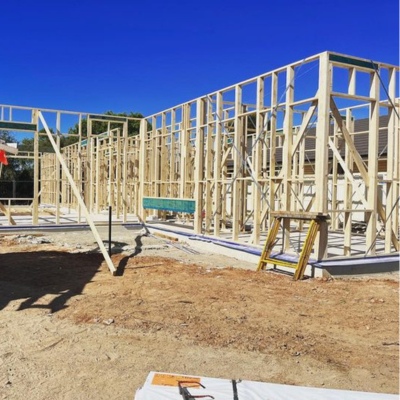
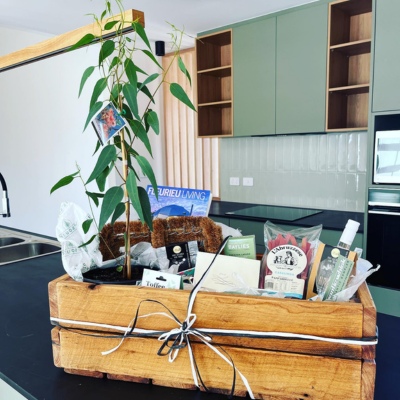
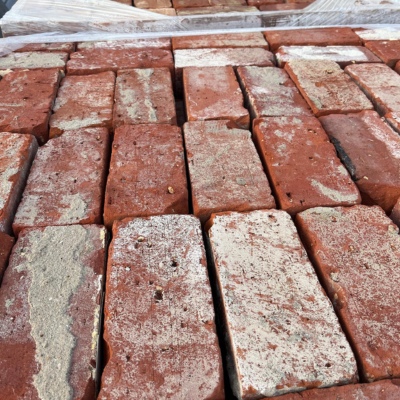
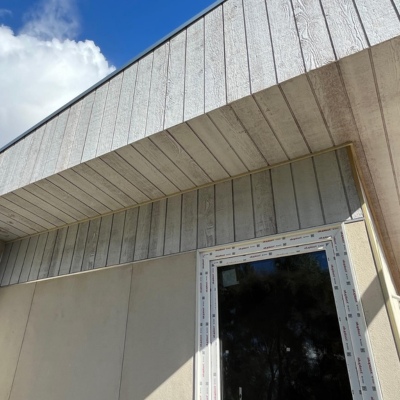
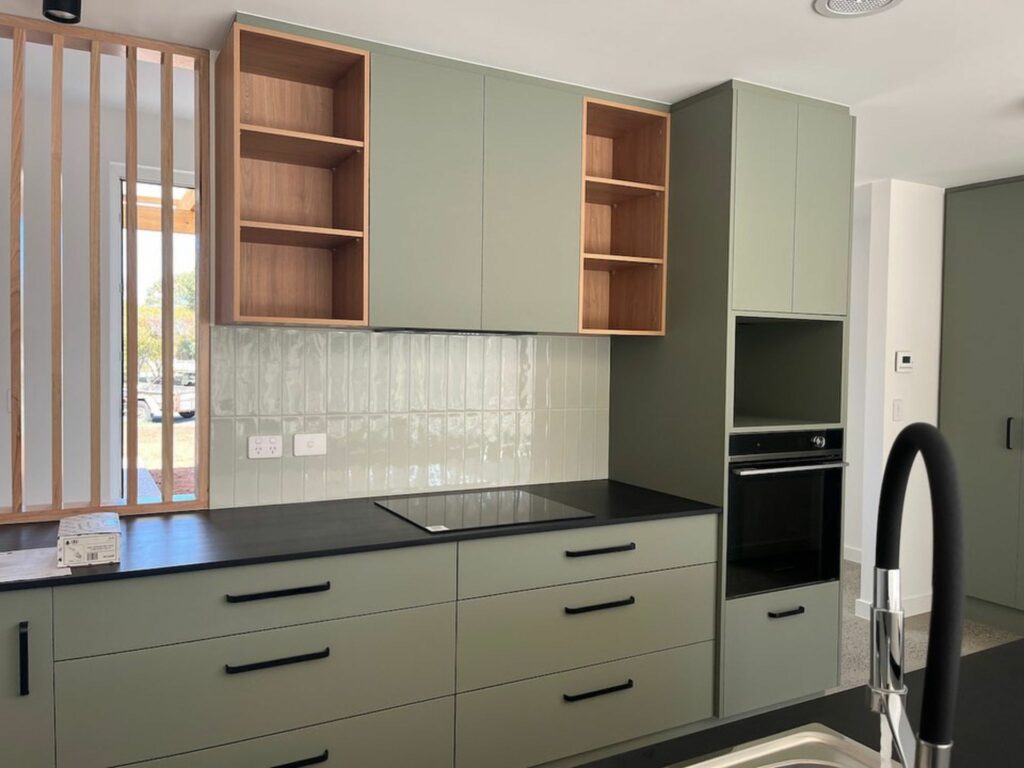
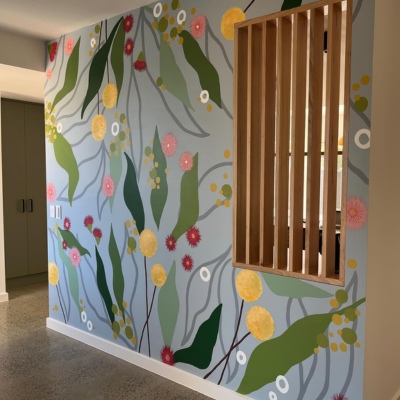
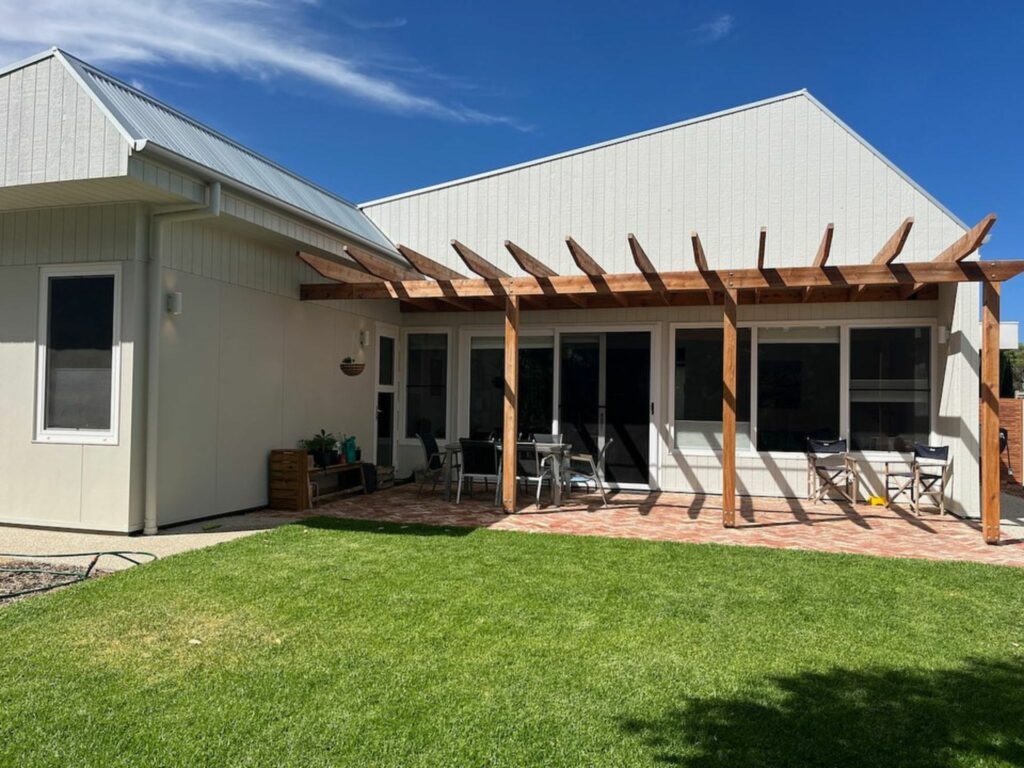

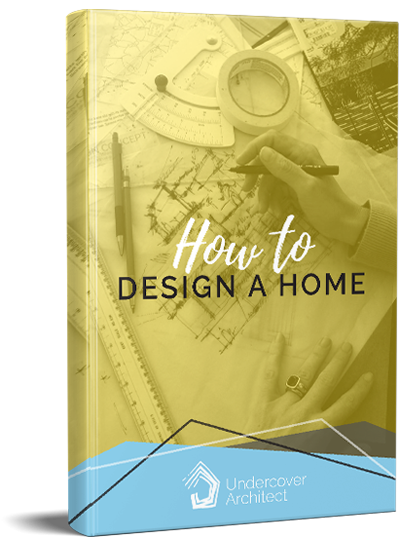
 With over 30 years industry experience, Amelia Lee founded Undercover Architect in 2014 as an award-winning online resource to help and teach you how to get it right when designing, building or renovating your home. You are the key to unlocking what’s possible for your home. Undercover Architect is your secret ally
With over 30 years industry experience, Amelia Lee founded Undercover Architect in 2014 as an award-winning online resource to help and teach you how to get it right when designing, building or renovating your home. You are the key to unlocking what’s possible for your home. Undercover Architect is your secret ally
Leave a Reply